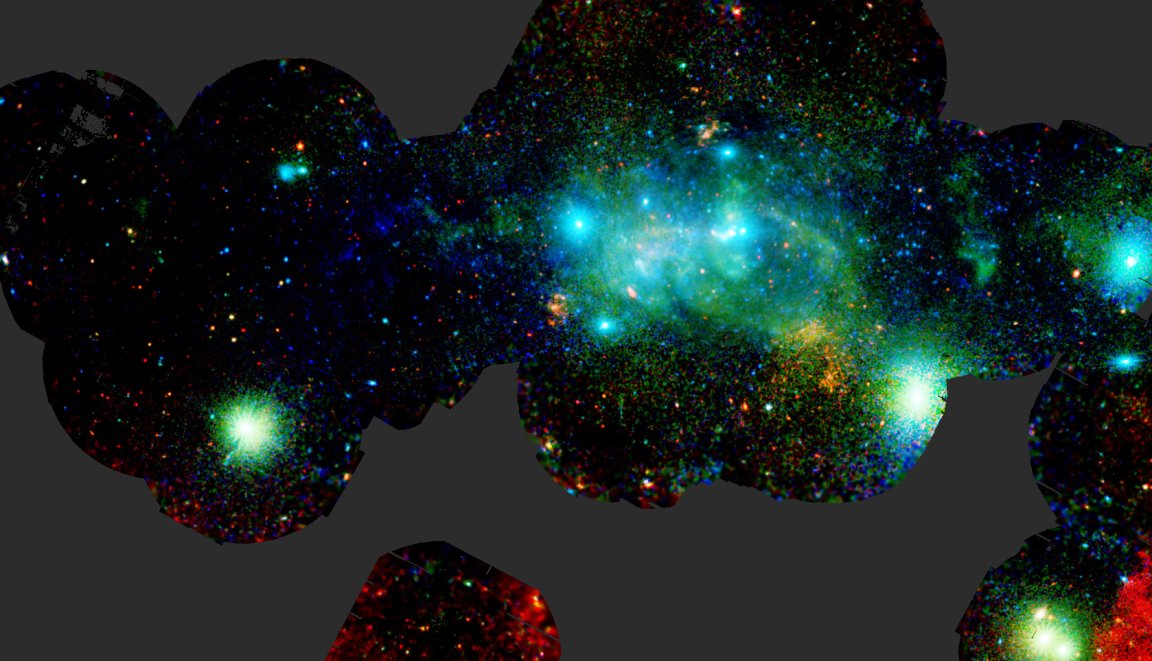

The dark heart of the Milky Way—the galaxy the Sun, and roughly 400 billion other stars, call “home”—is revealed in a new image from the European Space Agency (ESA). Taken by the XMM-Newton Telescope, which examines the night sky in the x-ray portion of the electromagnetic spectrum, the image hones in on the densely-packed central part of our galaxy.
In addition to hosting many high-mass stars, the central Milky Way has a wide-range of cosmological objects. Of course, its most notable one is Sagittarius A*: a supermassive black hole with the mass of millions of Sun-like stars.
This image, in particular, shows how the gaseous reservoirs surrounding the stars and supermassive black hole were impacted by populations of dead stars—namely pulsars and neutron stars. Here, the brightest sources of light happen to be places where binary star systems have arisen.
Comprised of two stellar objects, the most common configuration for a binary system consists of a dense stellar corpse (born following the death of a massive star), and another larger companion. The smaller body becomes a cannibal of some sorts…siphoning material from it neighbor, ultimately bombarding space with high-energy x-rays as a result.
Younger clusters of stars are tinged-red, while Sag A is the fuzzy object near the center (to the right). Everything you see here is spread across one thousand light-years of space.
More from the ESA:
Most of the action is occurring at the centre, where diffuse clouds of gas are being carved by powerful winds blown by young stars, as well as by supernovas, the explosive demise of massive stars.
While black holes themselves do not emit light, their immense gravitational pull draws in the surrounding matter that, in the process, emits light at many wavelengths, most notably X-rays. In addition, two lobes of hot gas can be seen extending above and below the black hole.
Astronomers believe that these lobes are caused either directly by the black hole, which swallows part of the material that flows onto it but spews out most of it, or by the cumulative effect of the numerous stellar winds and supernova explosions that occur in such a dense environment.
This image, showing us an unprecedented view of the Milky Way’s energetic core, was put together in a new study by compiling all observations of this region that were performed with XMM-Newton, adding up to about one and a half months of monitoring in total.
[Reference: European Space Agency]
A second image was also released:

Per the ESA: “The image combines data collected at energies that correspond to the light emitted by heavy elements such as silicon and argon, which are produced primarily in supernova explosions, as well as other narrow energy bands. It spans about 2.5º across, equivalent to about one thousand light-years.”